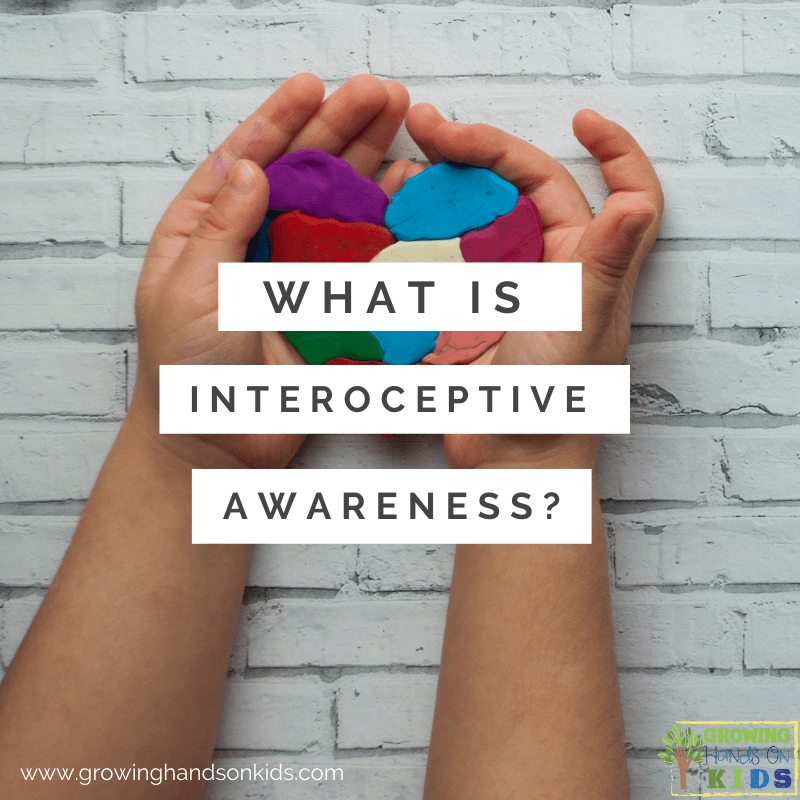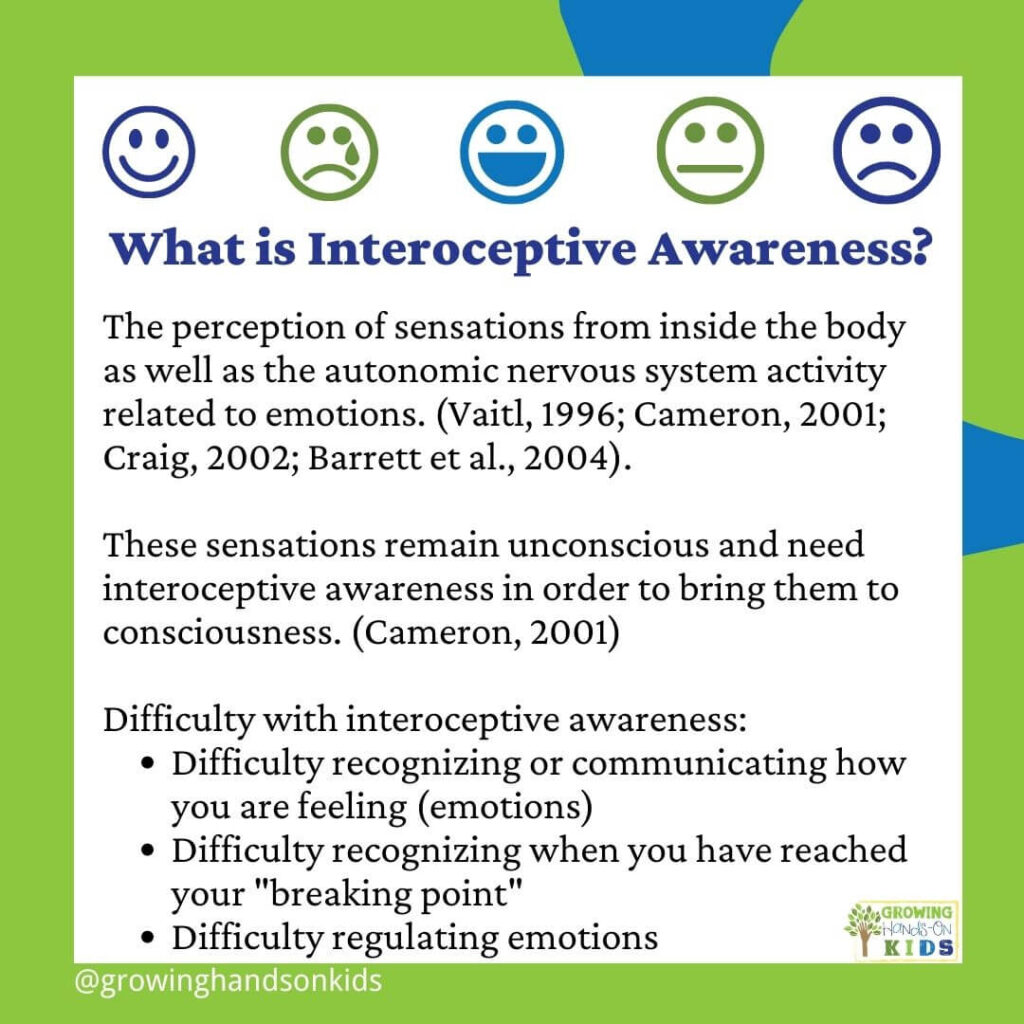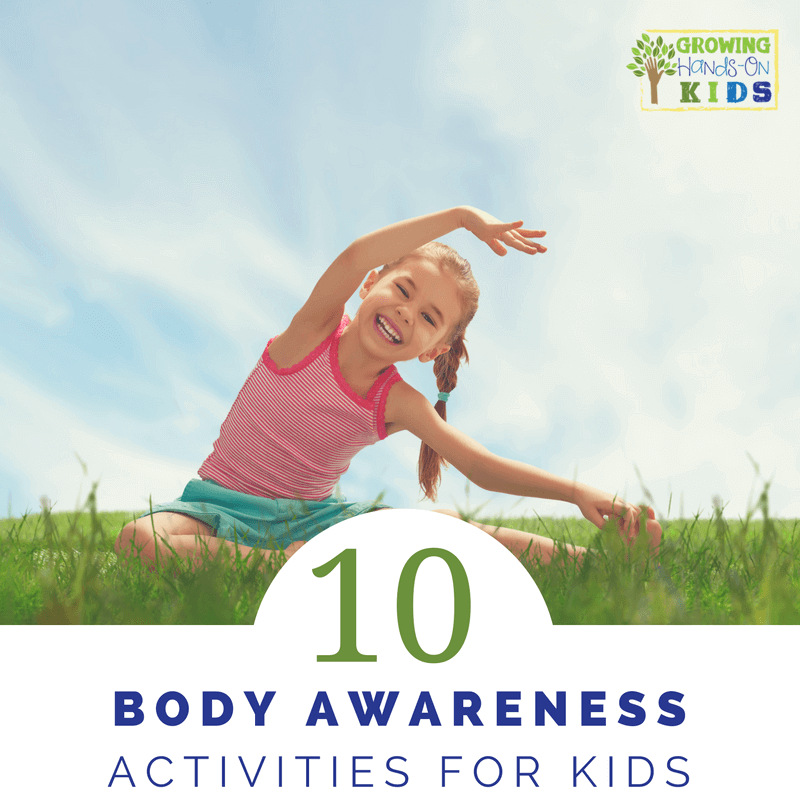What is Interoceptive Awareness?
Affiliate and Referral links are used below to promote products I love and recommend. I receive a commission on any purchases made through these links. Please see my disclosure policy for more details. As an Amazon Associate, I earn from qualifying purchases.
Over the last month, I decided to do a short series on emotional regulation skills on Instagram. While researching this important topic, I came upon a term that I have not heard a lot about. That term is interoceptive awareness. If you know what interoception is, you can probably take a guess at the meaning of interoceptive awareness. But, I wanted to dig a little deeper into this term and how it relates to emotional regulation and self-regulation skills.
Connection Between Self-Regulation and Interoception
We can't start a discussion on emotional regulation and self-regulation until we address the building block of these two skills which is interoception.
Let's look at some definitions so we can understand how all these things are connected.
Self-Regulation is the ability to manage, monitor, and react through behavior, emotions, thoughts, and energy in a way that is positive for ourselves and those around us.
Emotional Regulation is the ability to control your emotional state, including monitoring and responding to stimuli, stressors, or other wide ranges of emotions.
Interoception is the sense of knowing what is going on INSIDE our bodies, including our emotional state. It also includes things such as hunger, thirst, body temperature, feeling pain, our state of arousal (tired vs. alert), knowing when to go to the bathroom, etc.
Interoception can be seen as a precursor and even a blueprint for an emotional response. (Damasio, 1999).
If a child doesn’t understand what is going on INSIDE their bodies, we can’t expect them to react to what is going on OUTSIDE their body.
What is Interoceptive Awareness?
In short, it is the perception of sensations from inside the body as well as the autonomic nervous system activity related to emotions. (Vaitl, 1996; Cameron, 2001; Craig, 2002; Barrett et al., 2004).
These sensations remain unconscious and need interoceptive awareness in order to bring them to consciousness. (Cameron, 2001)
Being able to respond to interoceptive information early on allows us to be aware, process, interpret and strategize in stressful situations.
Just as any other sensory system, you can have a hyper or hypo sensitivity to stress and interoceptive awareness.
Those who are hyper-aware tend to be “over-relative” in responses, both negative and positive.
Those who are hypo-aware may be less sensitive and less responsive to cues their body is giving them related to emotions and body awareness.
Stress plays a huge role in interoceptive awareness. Stress can lead to dysregulation. Exposure to constant stress caused by the environment, trauma, etc, can initially cause hyper-responses, but eventually can lead to hypo-responses.
When this happens, the body becomes “numb” and can lead to a decrease in interoceptive awareness and the ability to detect, tolerate and interpret interoceptive cues.
How to Improve Interoceptive Awareness
How can we help our children improve their interoceptive awareness skills?
The first step is to teach our children about their sensory systems and how they work together.
Mindfulness & Yoga
Listening to their bodies through mindfulness and yoga is another great way to help children improve interoceptive awareness.
Here are some resources for that:
- Kids Yoga Stories– You can find all her mindfulness resources here.
- Cosmic Kids Yoga – Be the Pond | Cosmic Kids Zen Den – Mindfulness for kids
Breathing Exercises
Breathing exercises also help children to slow down and listen to what is going on inside their bodies.
These can be done with breathing card prompts or a Hoberman sphere, etc.
Heavy Work/Proprioceptive Input
Heavy work activities can help them to recognize how their bodies respond to different inputs (increased heart and breathing rate, temperature, etc). Proprioceptive input is very important for improving interoception, which is what heavy work is.
Altering Activities
Altering activities can help to wake up your child's body and also help them to feel their heart beating faster or their breathing rate increasing.
I have some alerting activities listed in this post here.
References:
- Cameron O. (2001). Interoception: the inside story – a model for psychosomatic processes. Psychosom. Med. 63 697–710. 10.1097/00006842-200109000-00001 [PubMed] [CrossRef]
- Craig A. D. (2002). How do you feel? Interoception: the sense of the physiological condition of the body. Nat. Rev. Neurosci. 3 655–666. 10.1038/nrn894 [PubMed] [CrossRef]
- Barrett L. F., Quigley K., Bliss-Moreau E., Aronson K. (2004). Interoceptive sensitivity and self-reports of emotional experience. J. Pers. Soc. Psychol. 87 684–697. 10.1037/0022-3514.87.5.684 [PMC free article] [PubMed] [CrossRef]
- Damasio A. (1999). The Feeling of What Happens: Body and Emotion in the Making of Consciousness. New York, NY: Harcourt.
- Price, C. J., & Hooven, C. (2018). Interoceptive Awareness Skills for Emotion Regulation: Theory and Approach of Mindful Awareness in Body-Oriented Therapy (MABT). Frontiers in psychology, 9, 798. https://doi.org/10.3389/fpsyg.2018.00798
- Vaitl D. (1996). Interoception. Biol. Psychol. 42 1–27. 10.1016/0301-0511(95)05144-9 [PubMed] [CrossRef]
For more tips, tools, and strategies on child development, check out the links below.

Heather Greutman, COTA
Heather Greutman is a Certified Occupational Therapy Assistant with experience in school-based OT services for preschool through high school. She uses her background to share child development tips, tools, and strategies for parents, educators, and therapists. She is the author of many ebooks including The Basics of Fine Motor Skills, and Basics of Pre-Writing Skills, and co-author of Sensory Processing Explained: A Handbook for Parents and Educators.





